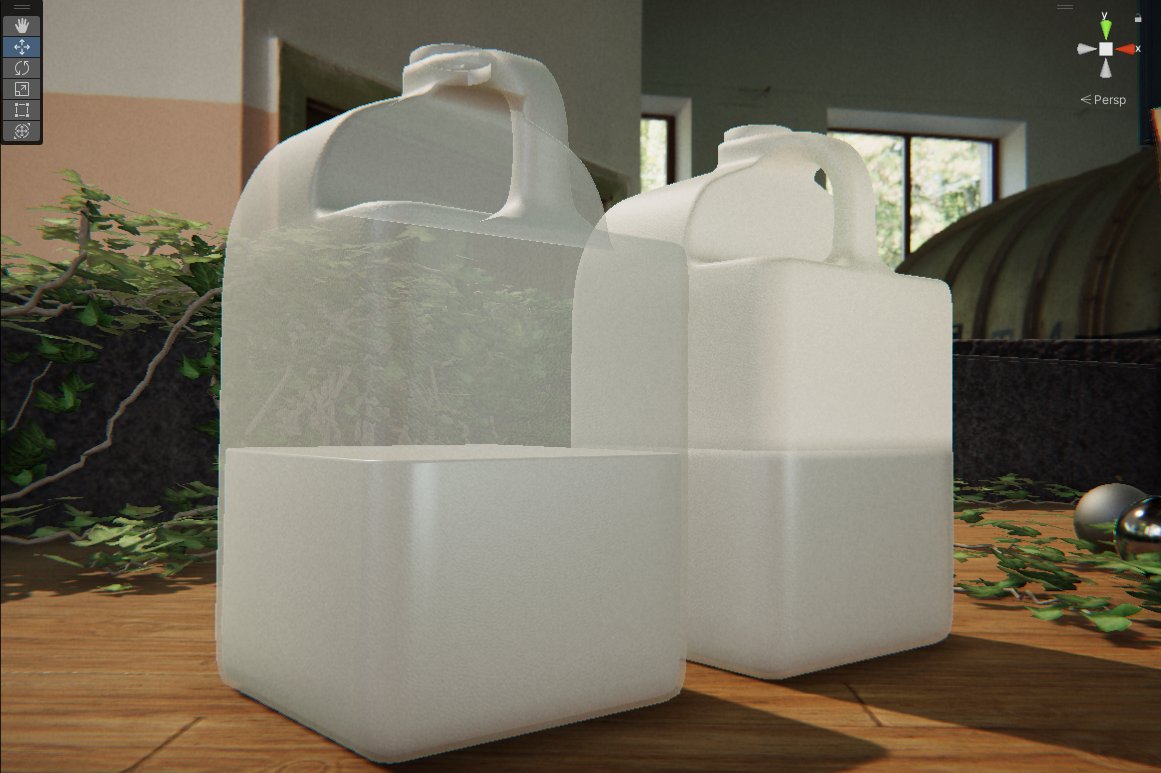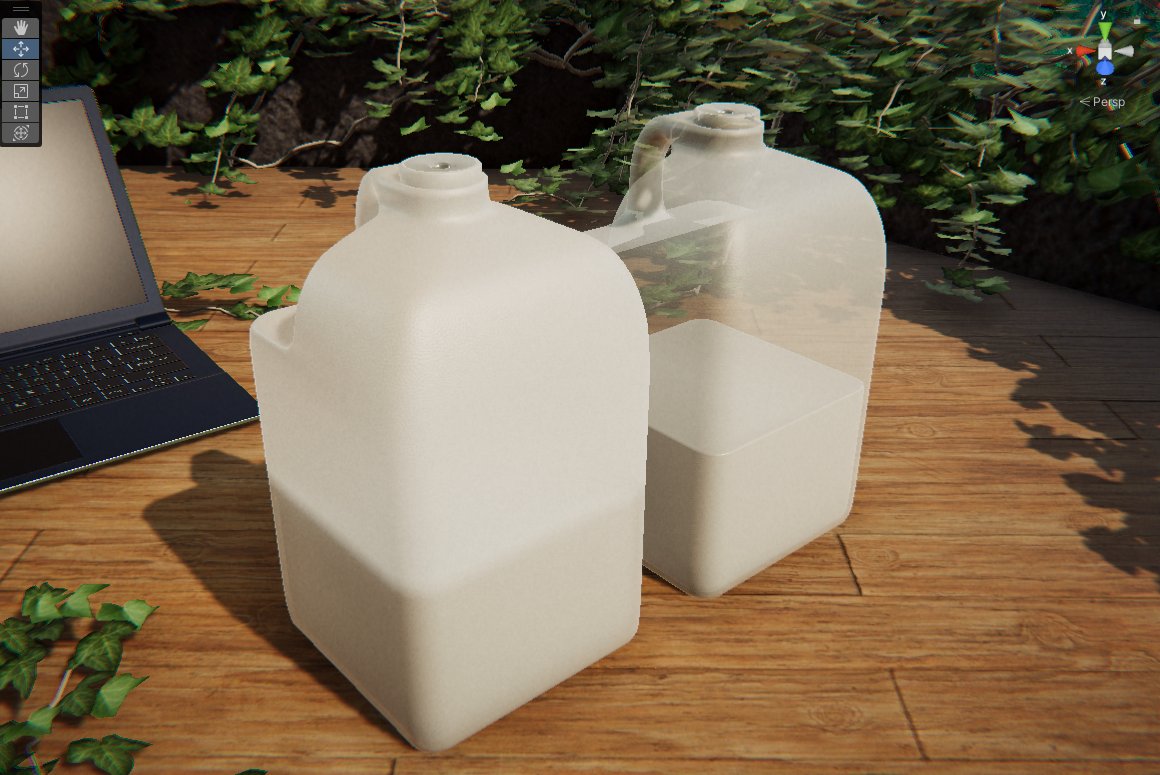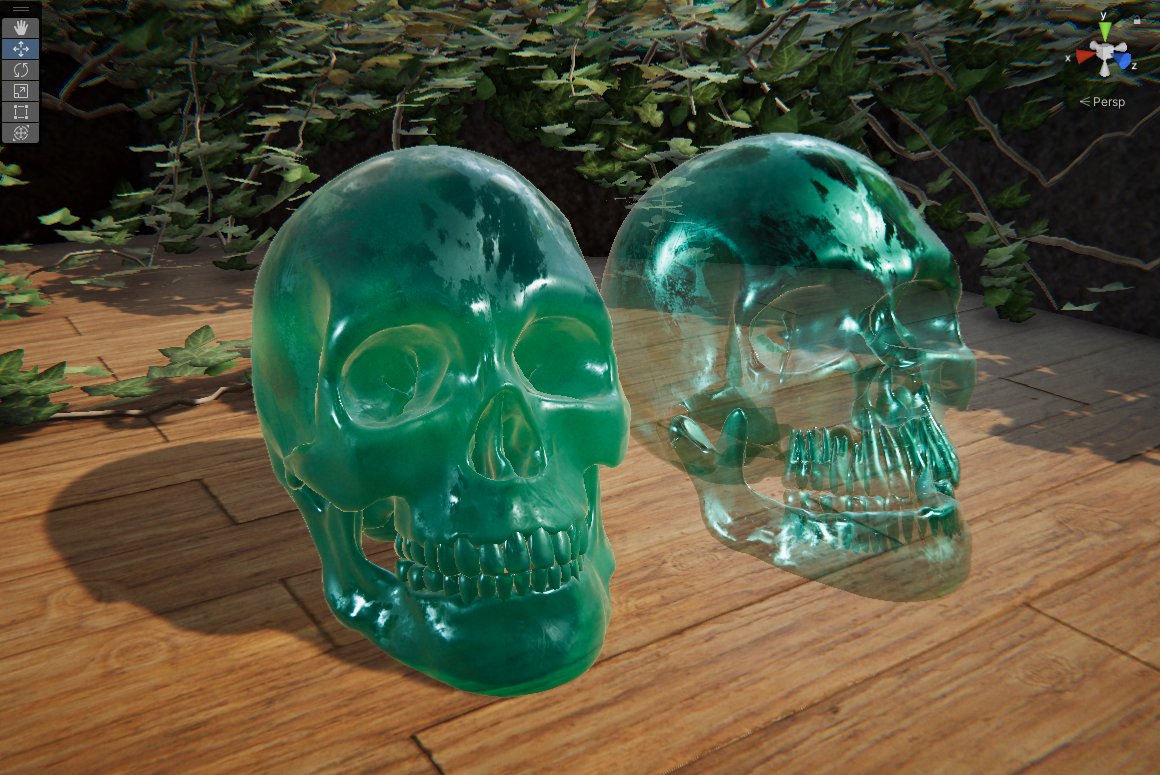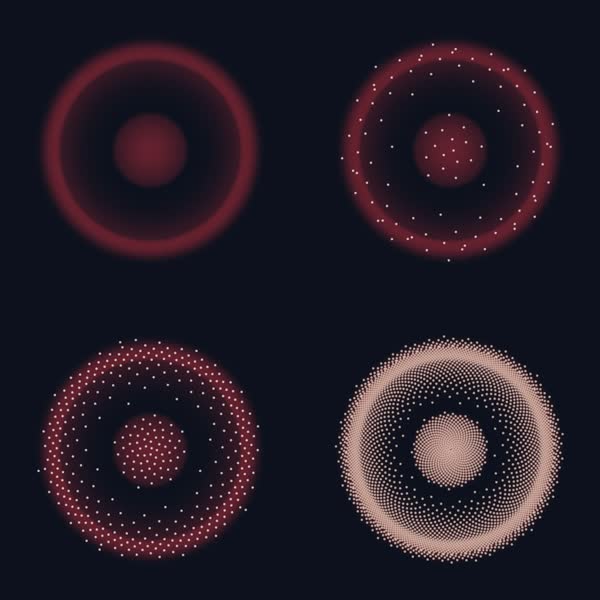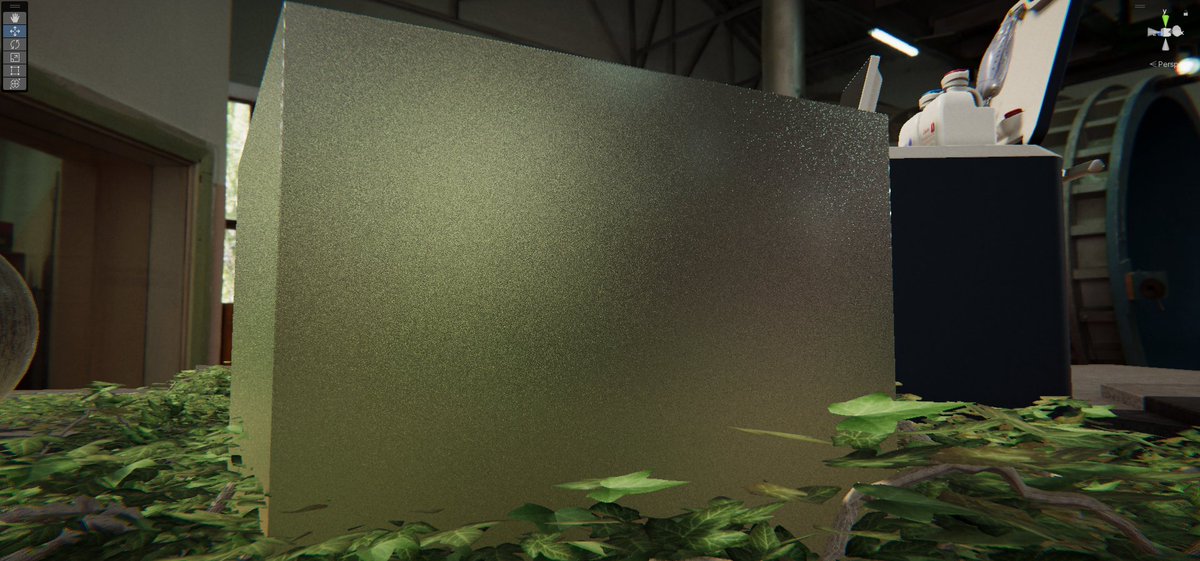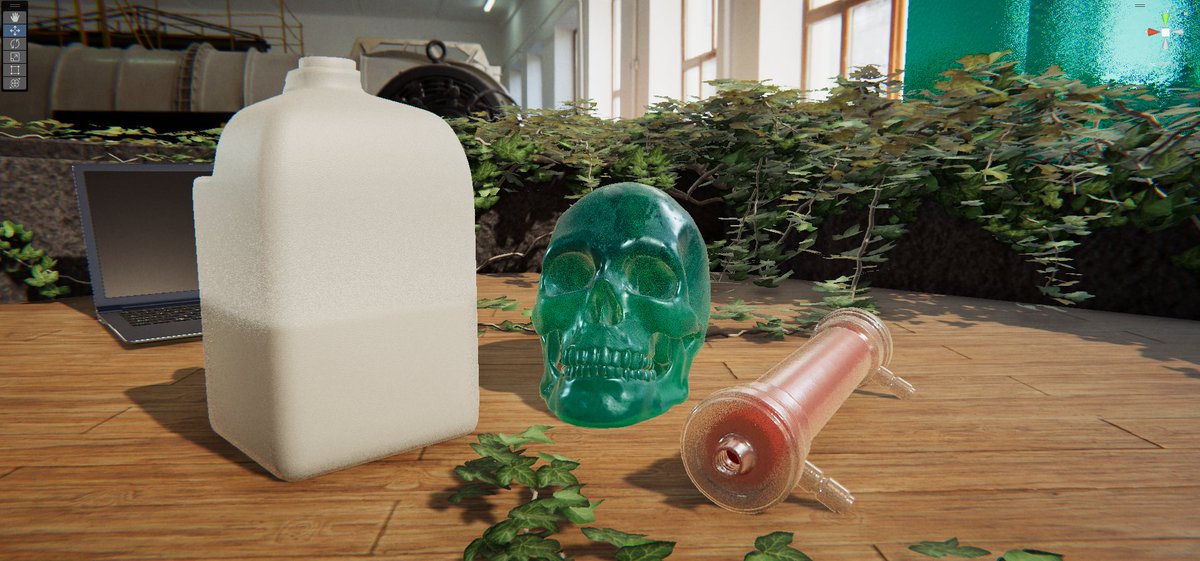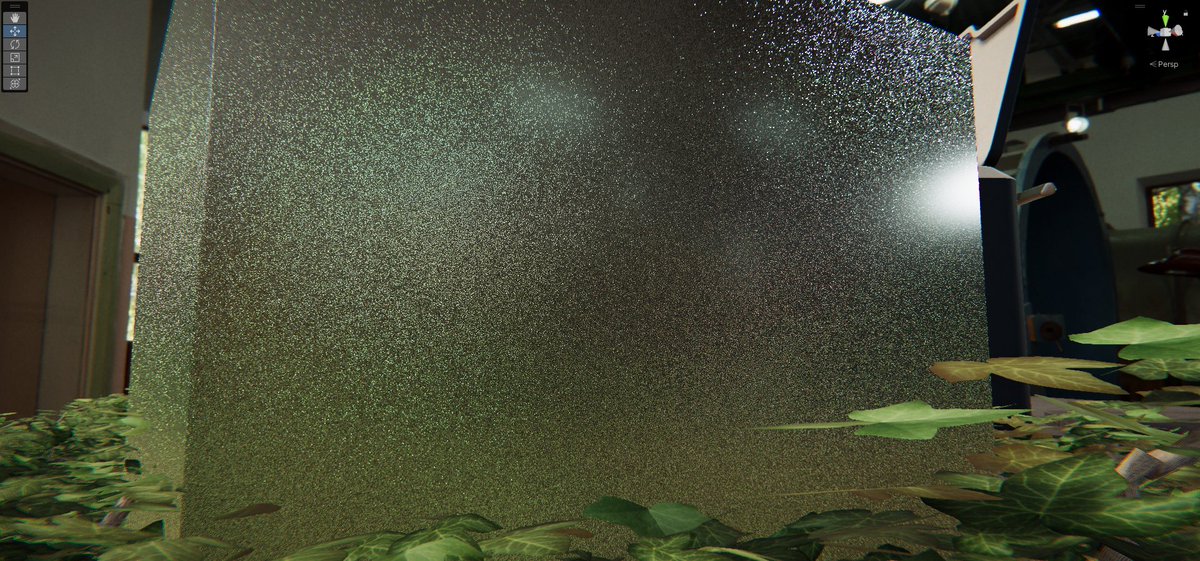well as long as we're still here, might as well show off some cool graphics work I've been doing at my Actual Job
Custom renderer for highly-scattering semitransparent materials in URP. Mainly meant for soft medical plastics, but also handles dirty/rough glass and acrylic nicely
More translucent surfaces scatter light through the back side
(fundamentally it's the same "render with reversed normals and add" approach other engines use for leaves/cloth/etc, but integrated into the rest of the shading math so it's modulated and tinted consistently)
notably I'm NOT trying to solve the order-independent transparency problem here. This is mainly for materials like milk-bottle plastic or frosted glass, which still mostly obscure what's behind them, so ZWrite is enabled
Handling the Glass Donut Nightmare Zone is future work lol
Translucent materials are blurry materials. Surfaces further from the interface are blurred less, so you need a variable-radius kernel that goes from 0 to, like, The Entire Screen
very tricky to do fast (can't use separable kernel, basically the bokeh problem at 2000px radius)
There are a lot of approaches you could take. I went with an adaptation of the spiral importance-sampling tech I was already using for subsurface scattering
Trades off noise for speed, but like, a TON of speed
Obviously with temporal reprojection tricks and/or a good denoiser you could smooth this out a whole lot
that's also on the Future Work list right now; would like to do it but I don't know when I'll have time
Also built a whole material inspector for it, so from the artists' perspective it works exactly like the regular URP shaders
conceptually it's split into an "exterior" layer that acts like a PBR surface coating, and an "interior" layer that controls scattering/tint/refraction
All the surface parameters work the same as URP Lit, with PBR maps, occlusion, normals, tiling details/masks, etc, and the translucency parameters can also be texture-driven
You can get a ton of realism by modulating the blur radius by roughness, so matte areas also scatter more
state of the art Moistened Orb Technology
